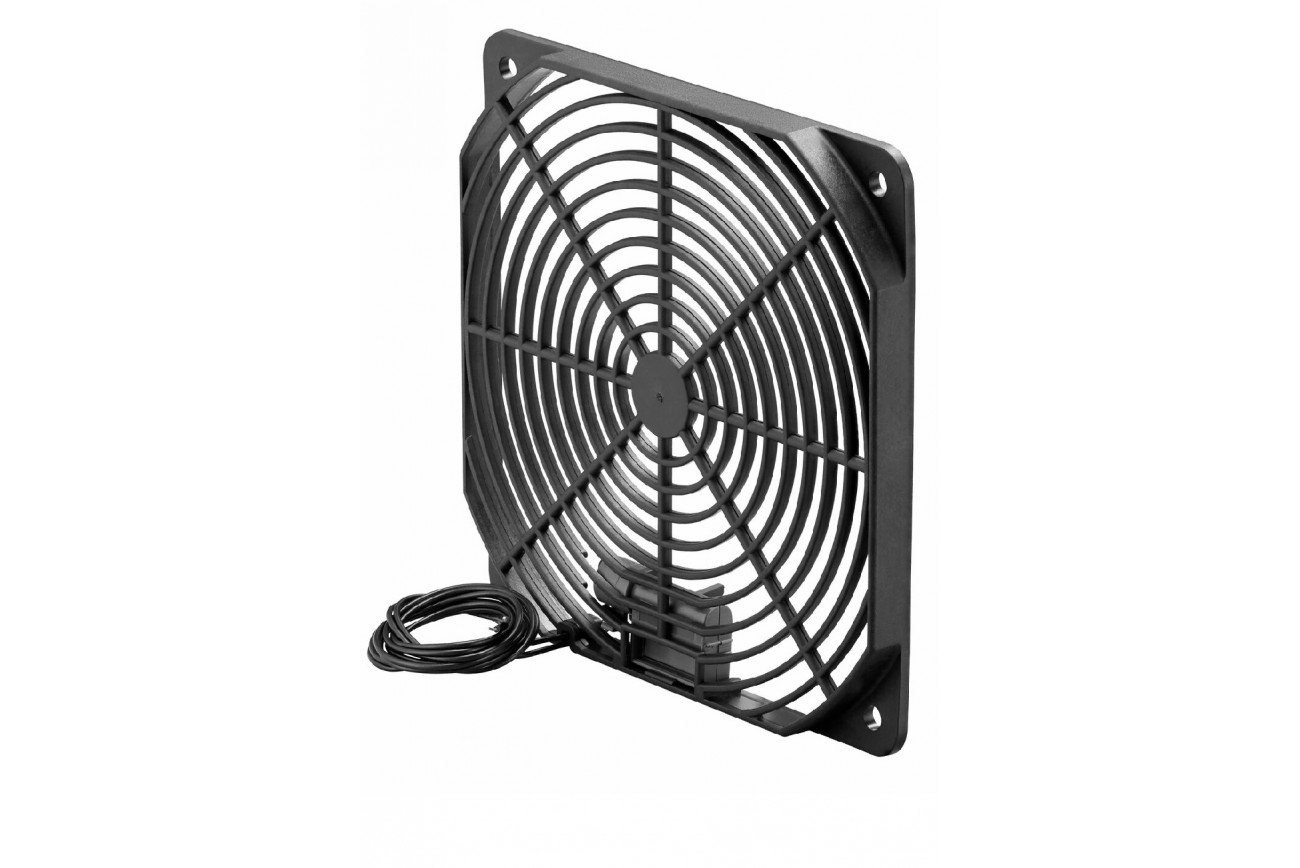Airflow sensor + GRID 120 * 120 * 10mm NC
- 73.00 USD
The air flow sensor allows you to monitor the presence or absence of air pressure. It contains reed contacts ("dry contact"). It is connects to the IO line of a NetPing device.
- For cupboards heated by fan heaters;
- For remote control of the fan operation at any point of an object, air flow control: yes, no;
- The mechanical principle of operation;
- Universal application;
- Small size;
- A plastic case;
- The status of contacts: N.Z. (normally closed or closed);
- One-piece wire of 0.5 m long.
The Airflow Sensor + GRID 120 * 120 * 10mm NC is designed to signal the presence or absence of air flow pressure. It can be used as a signal contact or to indicate a fan malfunction or clogging of the hood.
When this sensor is connected to NetPing/UniPing devices, it is possible to receive notifications about the presence of air flow in the form of Syslog, Email, SMS and SNMP TRAP messages. The sensor is connected using two wires to one of the IO lines of the device and the GND terminal. In the web-interface of the device it is displayed as the state of the IO line where it is connected.
If there is air flow, when the sensor flap rises, the signal contacts open, the IO line of the NetPing device takes the state “log. 1". If there is no air flow, when the sensor flap is lowered down to the initial state, the signal contacts are closed, the IO line of the NetPing device takes the state “log. 0 ".

Information about a sensor plugin is in the document "User Guide" for a device, to which you connect a sensor. Information about configuring a sensor and its functionality is in the document "Firmware Description" for a device, to which you connect a sensor.
A sensor is packaged with an inseparable cable, with connectors on the ends. A cable length can be increased with the help of flat cable extenders of RC-4 sensor, which are sequentially plugged one into another. Or it can be done independently with the help of any wire with a minimum cross section of 0,4 mm2. Maximum allowable length of a flat cable is 100 m.
Precautionary measures
It is not allowed to use the air flow sensor in the magnetic field, as in this case the permanent magnet built into the device can involuntarily deviate from its normal position regardless of the air flow.
The sensor should be placed at a sufficiently large distance from electromagnetic fields, for example, created by transformers, powerful engines and so on, since otherwise the contact can switch with the frequency of the electromagnetic field. The interference must be checked with an oscilloscope and, if necessary, you should change the mounting location.
Avoid mounting points where there are formations of air cushions or airflow swirls.
It is not allowed to use the sensor in case of high dust content in the environment.
The switched power should not exceed 10 Watts.
Short-term excess of maximum voltage and maximum current is not allowed.
For inductive or capacitive loads, the resulting starting voltages and currents must be limited by a suitable protective circuit.
| Basic parameters | |
| Contact threshold | > 2.5 m/s |
| Contact transition resistance | < 370 mOhm |
| Hysteresis | > 1 m/s |
| Maximum air flow rate | 50 m/s |
| Maximum switching current | 170 mA |
| Maximum switching voltage | 60V DC |
| Service life | > 100000 cycles |
| The switching power | 10 W |
| Physical parameters | |
| Case | Plastic |
| Mounting position | Bi-directional protrusion perpendicular to air flow |
| Protection class | IP20 |
| State of contacts | NC |
| Type of contact | Reed switch |
| Operating temperature range | -20°C ... +50°C |
| Weight | 30 g. |
| Sensor cord length | 0.5 m. |
| Humidity range | < 70% |



















-300x155.jpg)


